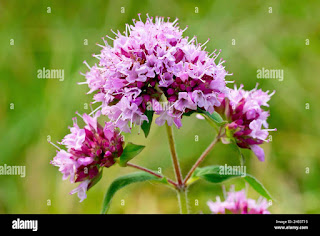What Is Marjoram?
A Botanical Overview
Marjoram (Origanum majorana) is a fragrant herb that belongs to the mint family, known scientifically as Lamiaceae. It is widely appreciated for its sweet and mild aroma, making it a favorite in kitchens and natural medicine around the world. The Marjoram plant is a small, woody perennial shrub that grows about 12 to 24 inches tall. It has soft, oval-shaped green leaves and delicate pink or white flowers that bloom in summer. Originally native to the Mediterranean region, this herb thrives in warm climates and well-drained soils.
The Marjoram Plant: Characteristics and Growth
The Marjoram plant prefers sunny locations and can be grown both outdoors and indoors, making it easy for gardeners everywhere to enjoy fresh herbs year-round. It is drought-tolerant and requires moderate watering. The leaves have a subtle, sweet scent, and when crushed, release a warm, spicy fragrance that adds depth to food and natural remedies.
Types of Marjoram: Sweet, Wild, and More
There are several types of Marjoram, with Sweet Marjoram being the most commonly used variety for culinary and medicinal purposes. Another close relative is Wild Marjoram, often confused with oregano due to similar appearances. However, Sweet Marjoram is softer in taste, with a floral and slightly citrusy flavor, while Wild Marjoram (oregano) is more pungent and bitter.
Nutritional Benefits of Marjoram Herb
Adding Marjoram herb to your meals not only enhances flavor but also boosts nutrition. This herb contains many essential vitamins and minerals important for overall health.
Essential Vitamins and Minerals in Marjoram
Marjoram is rich in vitamin K, which supports bone strength and blood clotting. It also provides vitamin A, important for vision and immune health. Additionally, it contains minerals like iron and calcium, as well as antioxidants that help fight free radicals and inflammation in the body.
How Marjoram Benefits Health Naturally
Historically, Marjoram has been used to soothe digestive issues such as indigestion and bloating. It also possesses anti-inflammatory and antimicrobial properties, which may help in managing respiratory problems and skin conditions. Furthermore, inhaling the aroma of Marjoram oil can promote relaxation and reduce anxiety, making it a natural remedy for stress and insomnia.
Culinary Uses of Marjoram Leaves in Cooking
The gentle, sweet flavor of Marjoram leaves makes them a favorite in many culinary traditions. They complement a variety of dishes from soups to meats.
Popular Dishes with Marjoram Flavor
You can use fresh or dried Marjoram leaves to season roasted vegetables, grilled chicken, lamb dishes, and hearty stews. Its mild flavor pairs well with tomatoes, garlic, and olive oil, making it a key herb in Mediterranean cuisine. Many chefs also add Marjoram to salad dressings and sauces for a fresh herbal aroma.
Medicinal Properties of Marjoram Oil
Besides culinary use, Marjoram oil—extracted from the leaves and flowers—is a popular natural remedy.
How to Use Marjoram Oil for Wellness
Diluted Marjoram oil can be applied topically to relieve muscle pain and improve blood circulation. It is also used in aromatherapy to calm nerves, reduce headaches, and help with sleep disorders. Due to its antimicrobial effects, it may assist in healing minor wounds and skin irritations. Always remember to use essential oils carefully and consult a healthcare professional if needed.
Growing Marjoram Plant at Home: Tips and Tricks
If you want fresh herbs at your fingertips, growing a Marjoram plant at home is easy and rewarding. Choose a sunny spot with well-drained soil. Water the plant moderately—avoid overwatering, as it prefers slightly dry conditions. Pruning regularly encourages bushier growth and more flavorful leaves. You can also grow Marjoram indoors in pots near a sunny window.
Where to Buy Quality Marjoram Herb Online
For those who don’t have the time or space to grow their own, quality Marjoram herb is available online. Trusted stores like https://web.facebook.com/vesojlife offer organic, dried, and fresh options. Buying from reputable sources ensures purity and potency, which is important for both cooking and health uses.
Q1: Is Marjoram the same as oregano?
No, Marjoram and oregano are related but different herbs. Marjoram tastes sweeter and milder, while oregano has a stronger, more pungent flavor.
Q2: Can I consume Marjoram every day?
Moderate daily use of Marjoram in cooking or as herbal tea is safe and can provide health benefits.
Q3: Does Marjoram help digestion?
Yes, Marjoram is traditionally used to ease digestive discomfort and improve appetite.
Q4: How should I store Marjoram leaves?
Store fresh Marjoram leaves in an airtight container in the fridge or dry them to preserve for longer use.
References & Further Reading
-
Learn more about the scientific benefits of Marjoram at https://web.facebook.com/vesojlife
-
Find delicious Marjoram recipes at https://web.facebook.com/vesojlife


.jpeg)
.jpeg)
.jpeg)
